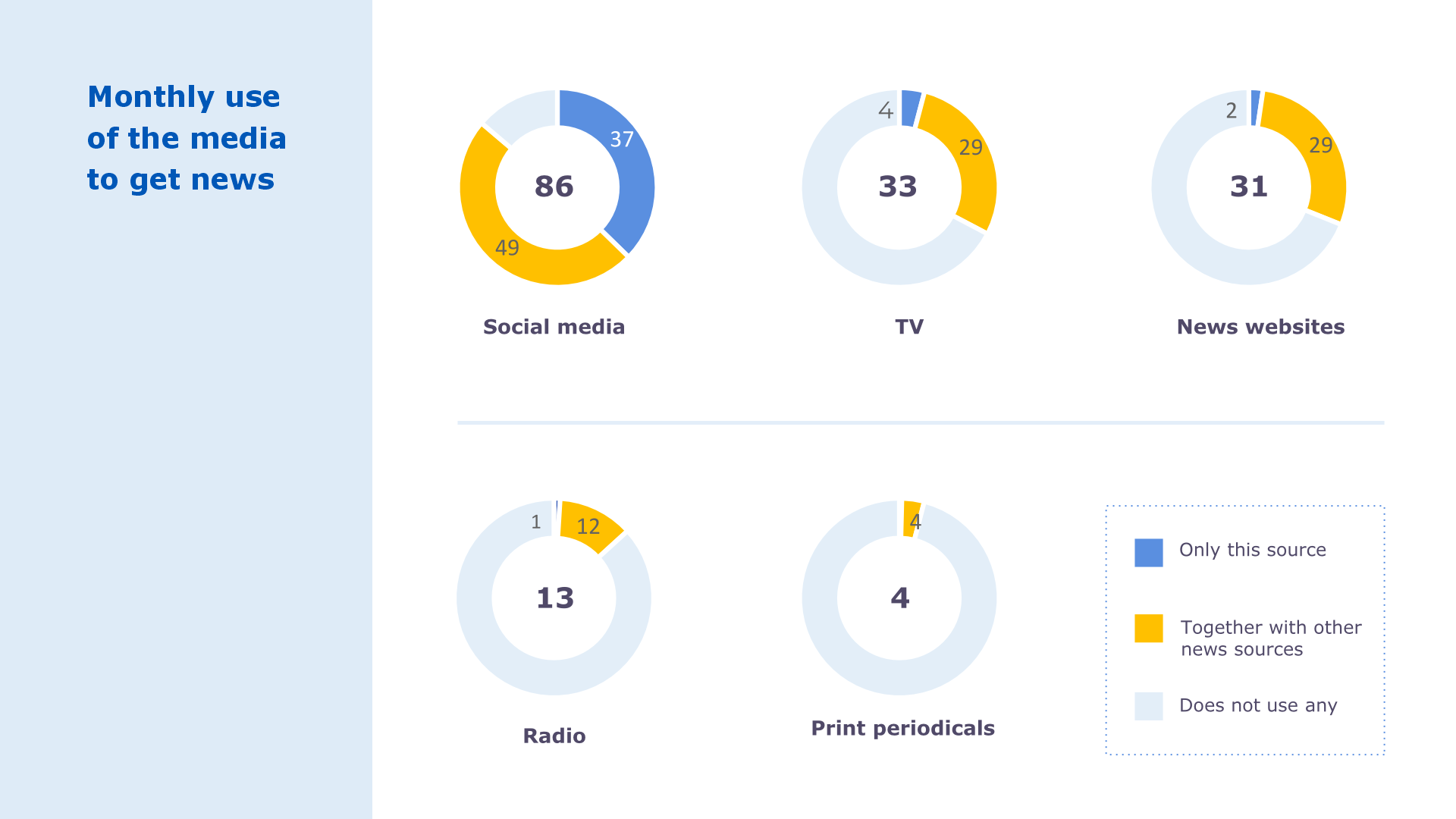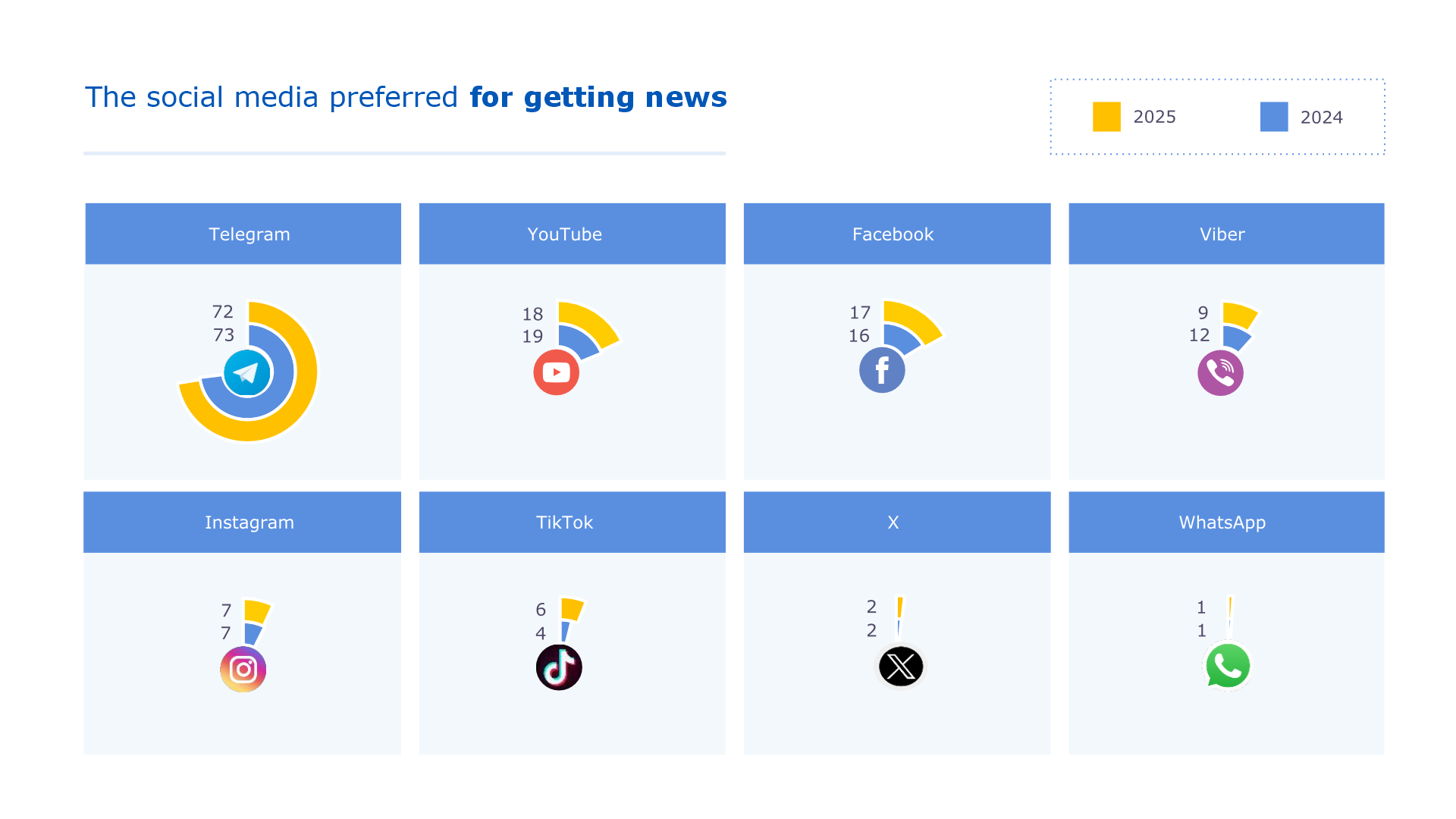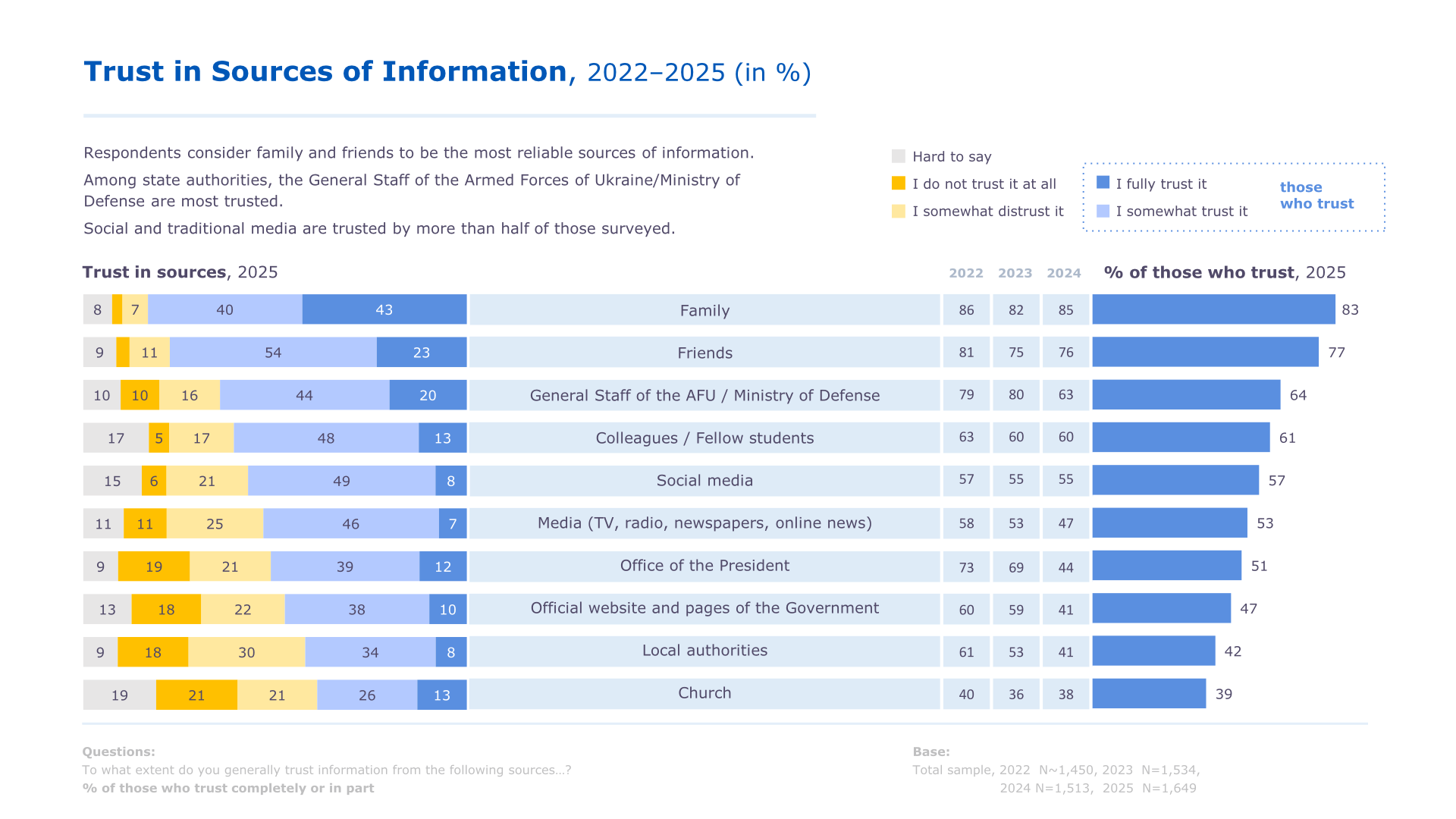
The study "Ukrainian Media, Attitudes, and Trust in 2025", conducted by InMind on behalf of Internews Ukraine provides a detailed snapshot of the country's information landscape. Based on an nationwide survey, the report confirms the persistence of digital dominance, the growing trust in regional sources, and the high level of public awareness regarding the threat of disinformation. Below are the key findings of the study.
In 2025, the main trends in media consumption not only persist but strengthen. Social networks remain the primary source of news, used by 86% of respondents
during the month. For a significant part of the audience - 37% - social platforms serve as their only source of information.

The main device for accessing news is the smartphone, used by 91% of respondents
, and among youth aged 18-35 this figure reaches 96%. While social media consumption grows, the use of other traditional sources such as television (33%), news websites (31%), radio (13%), and print press (4%) mostly remains at last year's levels.
Telegram
continues to dominate as the leading platform for accessing news, far outpacing other networks. One possible explanation is that Telegram offers an unedited, direct, and often "raw" flow of information that creates the impression of immediacy and a direct connection to the source (a blogger, a soldier, or an official channel). However, when 37% of society relies solely on these platforms, media pluralism is under threat. Such an "information diet" fosters echo chambers and heightens the risk of consuming unchecked, emotionally charged content.
TikTok
shows notable growth, expanding both its engaged audience and its news consumers. Meanwhile, news consumption on Viber has declined significantly.

The hierarchy of trust in information sources is clearly defined. The highest trust level is in information from family (83%)
and close friends. This reliance reflects an instinctive return to the smallest and most trusted social circle in times of global instability.

While 45% of respondents believe it is important to know who owns the media, in practice no more than one-third are aware of media ownership. Among official structures, military leadership (the General Staff of the Armed Forces of Ukraine / Ministry of Defense) enjoys the highest level of trust, with 64% of respondents expressing confidence.
When it comes to media sources:
Perhaps the most alarming finding concerns the mechanisms of spreading manipulative narratives or falsehoods. The study shows that over 50% of respondents encountered disinformation, and about 45% of those aware of it considered it believable.
The most widespread and seemingly credible disinformation narratives in 2025 included:
Importantly, respondents admitted to spreading false narratives in about 30% of cases, most often (77%) in personal conversations with close contacts.
72% of respondents believe they receive sufficient or even excessive information about the war. At the same time, 46% report feeling fatigued
by constant war-related news. Trust in war news stands at 54%, alongside significant increases in assessments of accuracy, completeness, and reliability compared to the previous year. Respondents note positive changes in coverage: information is now seen as more realistic ("less embellished"), more precise about missile and drone directions, and less sensationalized ("channels stopped chasing ratings on this"). Respondents also highlight that media outlets have become more responsible, refraining from publishing information that could be exploited by the enemy.
There is also a growing demand for positive news unrelated to war, such as stories about education, construction, and community development.
The study "Ukrainian Media, Attitudes, and Trust in 2025" shows us several trends in Ukraine's information environment. On the one hand, digital dominance and the concentration of news consumption in social media - especially Telegram - pose risks of disinformation. On the other hand, citizens' high awareness of manipulative practices and the growing trust in regional sources demonstrate societal adaptability and critical resilience. Trust in military leadership, active war news consumption, and heightened attention to reliability confirm that the media space has become a critical element of national security. Thus, today's Ukrainian media landscape is a tapestry where vulnerability to disinformation competes with society's capacity to develop its own protective immunity.
The study was carried out with the support of the Askold and Dir Fund, administered by ISAR Ednannia as part of the "Strong Civil Society of Ukraine: Driver of Reform and Democracy" project, with funding from Norway and Sweden, as well as with support from the Government of Canada and the French media development agency CFI. The content is the sole responsibility of Internews Ukraine (Ukrainian Media and Society Foundation) and does not necessarily reflect the views of the donor organizations or the governments of the aforementioned countries.
